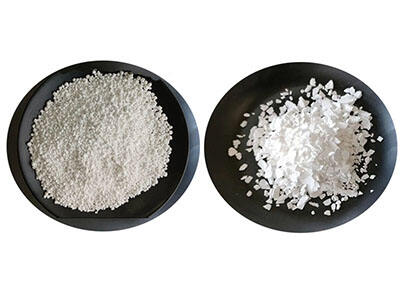Latest Trends in Calcium Chloride Applications: Anhydrous vs. Dihydrate Formulations
Calcium chloride is a versatile chemical compound that is commonly known to be having numerous application in diverse industries due to its numerous applications. The two major types of it, anhydrous and dihydrate possess distinct characteristics that render them to be used in particular applications. With the increasing need to have efficient and effective solutions, industries are looking into the applications of these formulations particularly in desiccant, deicing and food processing. This paper explores the hygroscopies of unrelated calcium chloride and benefit of stability of calcium chloride dihydrate in various industrial applications.
Hygroscopic Properties of Anhydrous Calcium Chloride in Desiccant and Deicing Use Cases
Anhydrous calcium chloride is famous because it is hygroscopic, that is, it can easily absorb water in the surrounding. The product is essential in its uses as a desiccant and deicing.
Anhydrous calcium chloride is the most effective as a desiccant. It is a very valuable ingredient of the moisture control products due to its water attraction and retention properties. Anhydrous calcium chloride is also used in industrial applications where the humidity of the product is severe such as when packaging electronics or pharmaceuticals to keep the product dry and whole. Its great solubility in water means that it is able to capture moisture even at low humidity therefore extending the shelf life of the products besides preserving the integrity of sensitive products. Also, it can be used in the household products where it is applied to keep the environment dry to avoid the development of mold and mildew.
Of special interest in deicing is the hygroscopic and exothermic characteristics of the anhydrous calcium chloride. When it comes into contact with ice it quickly takes up moisture and dissolves and decomposes the ice structure. The exothermic reaction generates heat which further increases the speed of the melting process. This is a dual-action, which makes anhydrous calcium chloride to be a favorite in extreme winter. In addition, it is useful at lower temperatures than other salts, which means that transportation networks can be used even during harsh weather conditions and cause fewer economic losses and be safe.
Stability Advantages of Calcium Chloride Dihydrate in Food Processing Additive Formulations
Calcium chloride dihydrate, having its constant make and convenient handling, has become common in food manufacturing sector. Being an additive, it has a number of benefits which improve the food quality and food safety.
Among the best applications of calcium chloride dihydrate in food processing is preserving the firmness of foodstuffs such as fruits and vegetables. It stops the mushiness in canned and processed foods thus maintaining the foods texture and look. The stability of this formulation will guarantee that the contribution of calcium is maintained at a constant level which is essential in the quality control.
Calcium chloride dihydrate has been applied in dairy processing to normalize the amount of calcium in the milk in order to coagulate milk in making cheese. This leads to better quality of yield and curd hence a useful weapon to cheese producers. Its consistent preparation makes the required chemical reactions to take place without bringing variability to the process.
In addition, it contributes to the manufacturing of beverages especially beer and cider. Calcium chloride dihydrate regulates the levels of calcium and affects the hardness of the water, thus, also affecting the taste and stability of the drink. The dihydrate formulation is more stable than the anhydrous counterpart and thus independence of the humidity variation on its use which will give constant results with all the batches.
Conclusion
It is found that the discovery of anhydrous and dihydrate formulations of calcium chloride provides a topography of opportunities in the face of industries in search of bespoke solutions. The use of anhydrous calcium chloride and its amazing moisture absorbing properties is essential in desiccant and deicing processes that are very efficient and safe. Conversely, the stability of calcium chloride dihydrate has its own benefits in food processing to improve the quality and uniformity of the products.
 EN
EN
 AR
AR BG
BG HR
HR NL
NL FI
FI FR
FR DE
DE IT
IT KO
KO NO
NO PL
PL PT
PT RU
RU ES
ES SV
SV TL
TL ID
ID LV
LV SL
SL UK
UK VI
VI SQ
SQ HU
HU MT
MT TH
TH TR
TR FA
FA MS
MS BE
BE HY
HY AZ
AZ KA
KA BN
BN CEB
CEB






